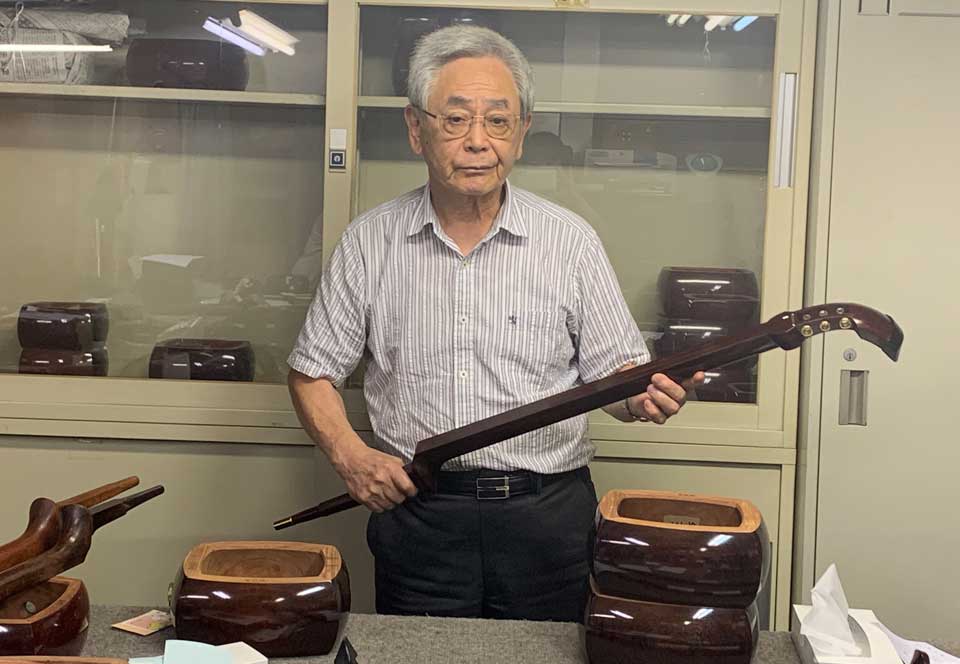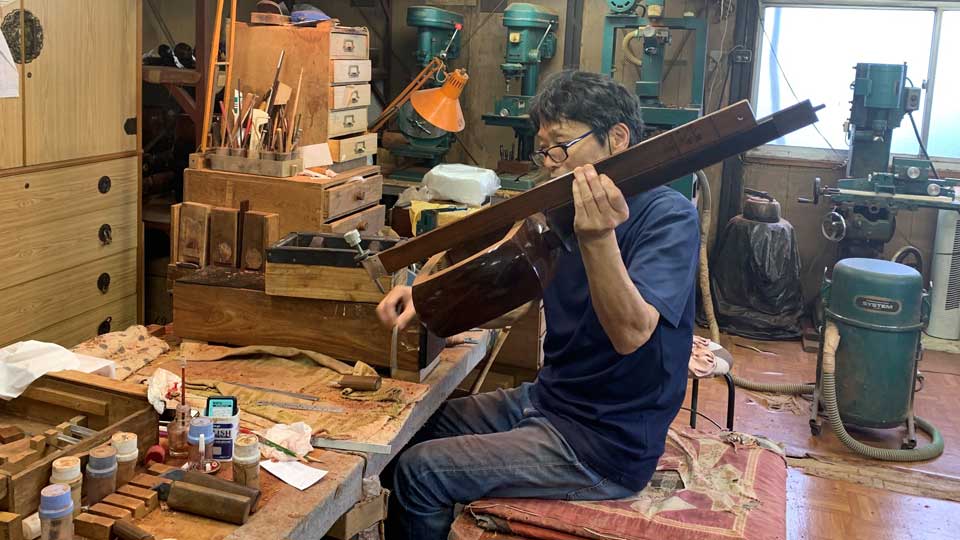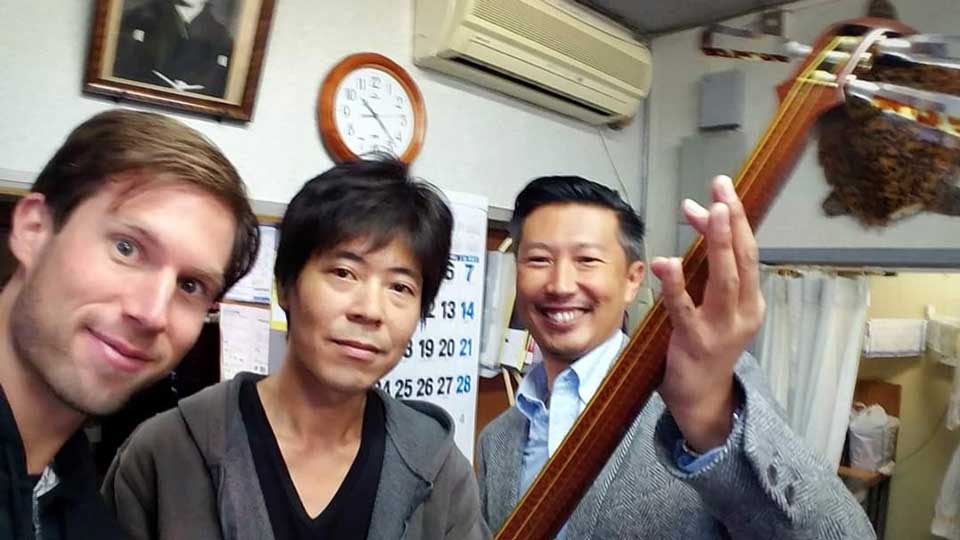If you hear the sound of a shamisen in Japan, the chances are high that the instrument began life in a workshop in western Tokyo. The Tokyo Wagakki company has a history going back 135 years and enjoys a more than 50 percent share of the market. The 14-member team can turn out about 400 instruments a year, and their creations are the favorites of many professional players.
But, in May, the 80-year-old third-generation president Otaki Katsuhiro told his employees that he would close the business the following month. The coronavirus was a key factor in his decision. As the infections spread, traditional stage performances were canceled and demand for shamisen slumped. The company didn't receive a single order in April or May. The future looked bleak, and Otaki decided it would be too difficult to keep workers on the payroll.
"I have been producing shamisen for more than 60 years, because I love making the instrument," he says. "We've kept improving our skills to offer high-quality shamisen, but I thought the time has come to quit, especially considering my age."

The virus was not the only factor in his decision. An industry group representing retailers of traditional Japanese musical instruments says 14,500 Japanese-made shamisen were sold in the country in 1970, but the number plunged to 1,200 in 2017. According to Tanaka Takafumi, editor-in-chief of Hogaku Journal, which focuses on traditional Japanese music, "the shamisen is now on the brink of crisis as demand shows no sign of picking up, because performers and enthusiasts are aging."

But when a group of younger performers heard the news about Tokyo Wagakki, they decided to help his company stay afloat. They began by collecting donations and spreading the word via social media. Otaki says he received a letter from an elementary school student in Kanagawa prefecture who was offering his pocket money.
And they're getting some help from abroad, too. Kyle Abbott performs and teaches shamisen in the US state of California. He was introduced to Otaki by a mutual friend seven years ago, and has become a big fan of Tokyo Wagakki's products. Abbott visits the company every time he comes to Japan.
He also sells the company's shamisen via Bachido, an international shamisen community he founded. After learning about Otaki's plan to close the firm, Abbott began posting about its shamisen on Facebook. His efforts have already resulted in nine orders.
"I've been aware of shamisen's popularity, and actually it's increasing internationally," says Abbott. "There are shamisen performance or practice groups and individual enthusiasts in USA, Canada, Australia, Argentina, Brazil, New Zealand, Singapore, Malaysia, Russia, Taiwan, UK, almost every country in Europe, and many more."
"It's very difficult to imagine the future of shamisen without Tokyo Wagakki," he says. "I believe they are the only workshop in Japan making high quality shamisen at large scale for a reasonable price. Very few makers have their skills and abilities."

Orders are now pouring in from across Japan, too. There's no guarantee that the influx will continue, but for now Otaki has postponed the closure and is focusing instead on ways to stay afloat.
"Having received so much support, I thought I should give it a try," he says. "I tell myself I've got time to find a successor, and will explore ways to pass on the skills and knowhow of shamisen production that we have been built up over so many years."

